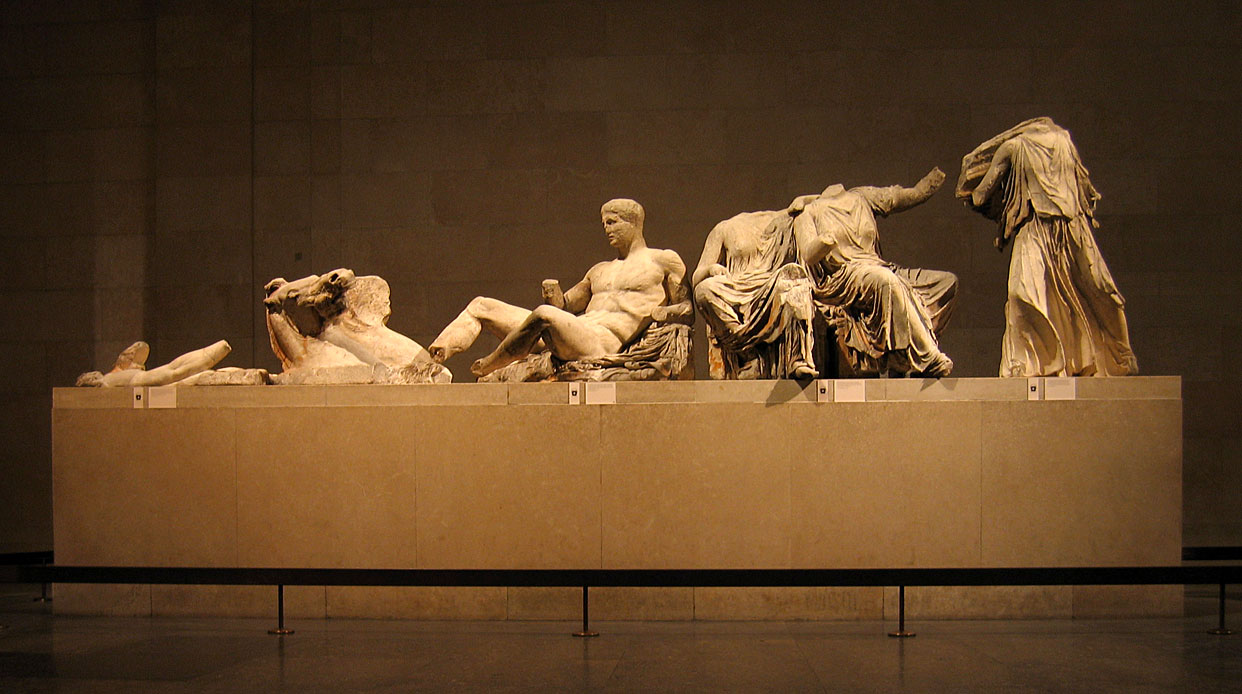The National Debt of Greece, according to National Debt Clocks . Org, here, as of Thursday, July 10, 2015, 10:45 PM EST, was $380 Billion USD and 345 Billion Euros.
A lot of money, but only $32k EU per person, only slightly higher than the typical American college student’s debt. (US News reported, here, “69 percent [of 2013 graduates] left school with an average of $28,400 in student loan debt.”)
But back to Greece …
Greece today is a nation of about 10.8 million people. According to the CIA World Factbook, here,
Greece achieved independence from the Ottoman Empire in 1830.”
The Field Museum recently announced, here,
The Greeks: From Agamemnon to Alexander the Great. The exhibition will take visitors on an extraordinary journey through more than 5000 years of Greek culture—from their Neolithic origins to the expansion of Greek culture into Asia and Africa under Alexander the Great. Drawing from the collections of 23 Greek museums, it will be the largest exhibition on the ancient Greeks in North America in 25 years.
“never before seen outside Greece.” If Greece asked for, and received, $45 Billion Euros as “rent” of these priceless artifacts, then they would lower their national debt by 13%.
Then there are the “Elgin Marbles.” according to the British Museum, here,
‘Elgin Marbles’ is a popular term that in its widest use may refer to the collection of stone objects – sculptures, inscriptions and architectural features – acquired by Lord Elgin during his time as ambassador to the Ottoman court of the Sultan in Istanbul. More specifically, and more usually, it is used to refer to those sculptures, inscriptions and architectural features that he acquired in Athens between 1801 and 1805. These objects were purchased by the British Parliament from Lord Elgin in 1816 and presented by Parliament to the British Museum.
Note the use of the term “acquired by” as in “These are a collection of sculptures, inscriptions, and architectural features acquired by Lord Elgin during his time as ambassador to the Ottoman Court of the Sultan in Istanbul … acquired in Athens between 1801 and 1805.” The objects may have been purchased by the British Parliament from Elgin in 1816, but a nationalist Greek or a reasonable and dispassionate observer might argue that one colonial empire acquired the artifacts from another colonial empire and that the Greeks are rightful heirs to the Marbles.
The fact is, no diplomat would today “acquire” artifacts in this manner and sell them to his or her parliament for display in a museum. Neither would a legitimate governing body allow such artifacts to be sold. In recognition of this, suppose Greece says to Turkey and UK, “About those ‘Marbles.’ The British Lord Elgin, a representative of a colonial government, acquired them from the Sultan of the Ottoman empire. We did not democratically choose either to give the Marbles to your Lord Elgin or the British Museum or to be part of the Ottoman Empire. In fact we chose to leave the Ottoman Empire some 25 years after what we consider to have been the theft of these antiquities. They were not the Sultan’s to give. We want the Marbles back.… Or, we want $250 Billion Euros over the next 20 years in payment.”
There’s an elegance here. Governments can raise funds in four ways: taxes, sales of property or resources, leases of property or resources, or by charging for various services.
–
Part 1 in a Series.
L. Furman, Popular Logistics, 7/9/15, Greece, Antiquities, and a Far Out Way Out
–
An analyst with Popular Logistics, I hold a BS in Biology, an MBA in “Managing for Sustainability” from Marlboro College, and over 20 years experience in Information Technology. Available as a speaker and strategist, I can be reached at “L Furman” at “Popular Logistics . com.”
